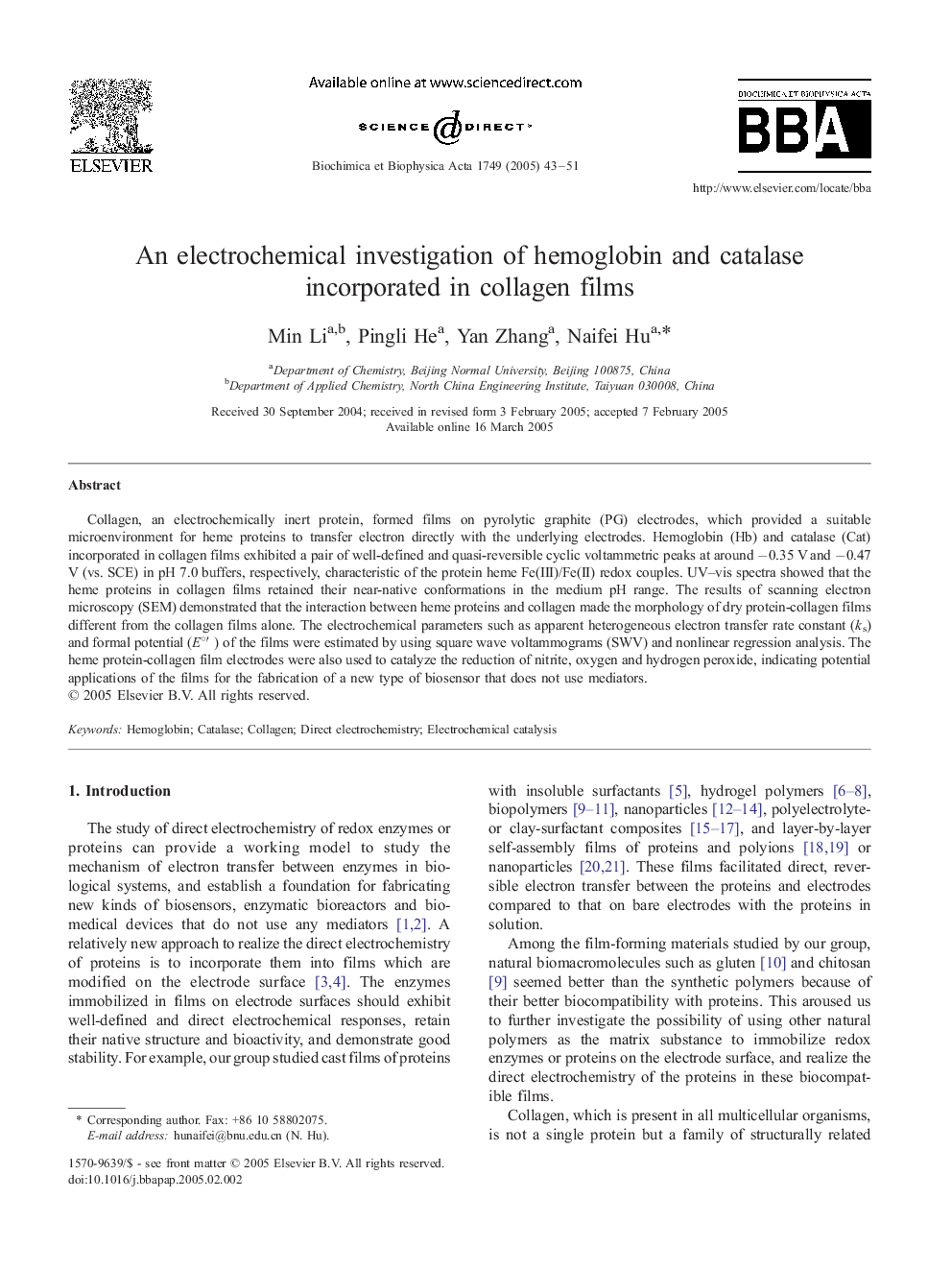| Article ID | Journal | Published Year | Pages | File Type |
|---|---|---|---|---|
| 10537955 | Biochimica et Biophysica Acta (BBA) - Proteins and Proteomics | 2005 | 9 Pages |
Abstract
Collagen, an electrochemically inert protein, formed films on pyrolytic graphite (PG) electrodes, which provided a suitable microenvironment for heme proteins to transfer electron directly with the underlying electrodes. Hemoglobin (Hb) and catalase (Cat) incorporated in collagen films exhibited a pair of well-defined and quasi-reversible cyclic voltammetric peaks at around â0.35 V and â0.47 V (vs. SCE) in pH 7.0 buffers, respectively, characteristic of the protein heme Fe(III)/Fe(II) redox couples. UV-vis spectra showed that the heme proteins in collagen films retained their near-native conformations in the medium pH range. The results of scanning electron microscopy (SEM) demonstrated that the interaction between heme proteins and collagen made the morphology of dry protein-collagen films different from the collagen films alone. The electrochemical parameters such as apparent heterogeneous electron transfer rate constant (ks) and formal potential (E°â²) of the films were estimated by using square wave voltammograms (SWV) and nonlinear regression analysis. The heme protein-collagen film electrodes were also used to catalyze the reduction of nitrite, oxygen and hydrogen peroxide, indicating potential applications of the films for the fabrication of a new type of biosensor that does not use mediators.
Related Topics
Physical Sciences and Engineering
Chemistry
Analytical Chemistry
Authors
Min Li, Pingli He, Yan Zhang, Naifei Hu,
